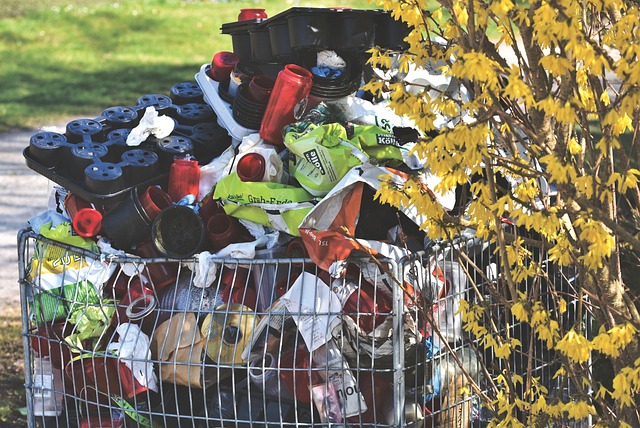Innovative business strategies for reducing plastic waste are essential in tackling one of the world’s most pressing environmental challenges. As industries grow, so does their plastic footprint, and traditional waste management approaches are no longer sufficient. Companies must adopt innovative strategies to minimize plastic usage, reduce waste, and promote sustainability. Below are several approaches businesses can take to address plastic waste effectively.
- Adopting Circular Economy Principles
One of the most innovative strategies for reducing plastic waste is embracing a circular economy model. This approach shifts away from the traditional linear economy, where products are made, used, and then discarded, toward a system where materials are reused, remanufactured, and recycled. By designing products for reuse and recycling from the outset, businesses can extend the lifecycle of plastics and reduce the need for new materials. For instance, instead of throwing away single-use plastic containers, customers return them to be cleaned and refilled, reducing plastic waste significantly.

- Utilizing Biodegradable and Compostable Plastics
Investing in alternatives to traditional plastics is another effective business strategy. Many businesses are exploring biodegradable and compostable plastics made from renewable resources like corn starch, potato starch, and sugarcane. These materials break down more easily in the environment, lessening their long-term environmental impact.
For instance, packaging companies create compostable packaging materials that behave like plastic but decompose similarly to organic matter. Adopting such materials reduces reliance on fossil fuels and lowers plastic pollution.
- Exploring Plastic Substitutes
A significant strategy for reducing plastic waste is the use of innovative substitutes for traditional plastic materials. Many companies are experimenting with materials that offer the durability of plastic without the environmental drawbacks. Eco-friendly packaging solutions, such as seaweed-based alternatives, are gaining traction as sustainable options to reduce plastic waste. These packaging solutions can biodegrade naturally in a few weeks, avoiding the long-term pollution caused by plastic.
Businesses can also look into sustainable apparel bags, a way to reduce the amount of plastic packaging that comes with the clothing industry. Instead of non-recyclable plastics, these can be made of materials that are recyclable at curbsite. Companies adopting these substitutes are helping shift industries away from fossil-fuel-based plastics, reducing their environmental footprint.
- Implementing Closed-Loop Recycling Programs
Closed-loop recycling is a process where products are recycled back into the same product or into products of equal value. This strategy helps reduce waste and conserve resources. Companies that adopt closed-loop systems ensure that the plastic they use can be recycled repeatedly without loss of quality, keeping plastic in circulation instead of in landfills or oceans.
- Leveraging Technological Innovations
Technology can play a key role in reducing plastic waste. Advancements in materials science, artificial intelligence, and blockchain technology provide businesses with tools to track, monitor, and optimize plastic usage. AI can help companies analyze data to optimize their packaging design, minimizing the amount of plastic used. Additionally, blockchain can be utilized to improve the traceability of plastic materials, ensuring that recycled plastics are genuinely reused in new products.

- Encouraging Consumer Engagement and Awareness
Educating consumers about plastic waste and offering incentives for sustainable behavior can drive significant change. Businesses can encourage customers to reduce plastic waste by providing eco-friendly alternatives and promoting the benefits of reduced plastic consumption. Additionally, rewards programs that incentivize the return or reuse of plastic products can be highly effective.
- Partnering with Nonprofits and Governments
Businesses can further amplify their impact on plastic waste by partnering with nonprofits, governments, and other organizations focused on sustainability. These partnerships can lead to collaborative innovations, the sharing of resources, and wider adoption of waste-reduction practices across industries.
The Alliance to End Plastic Waste, a coalition of businesses, is working with governments and environmental organizations to develop solutions to eliminate plastic waste. Collaborations like this can drive policy changes and support the development of new recycling infrastructure.
- Redesigning Supply Chains
Another strategic shift businesses can make is redesigning their supply chains to reduce plastic usage at every stage of the process. This can include opting for bulk shipping to reduce packaging, choosing suppliers that use sustainable materials, or even developing new ways to transport goods with minimal plastic.
Conclusion
Reducing plastic waste requires businesses to rethink their strategies, from product design and materials to supply chains and customer engagement. By adopting circular economy principles, investing in new materials, leveraging technology, and collaborating with key stakeholders, companies can not only reduce their environmental footprint but also align themselves with the growing consumer demand for sustainability. Innovative approaches to plastic waste reduction are not only good for the planet but can also offer a competitive advantage as markets shift toward eco-friendly practices.




